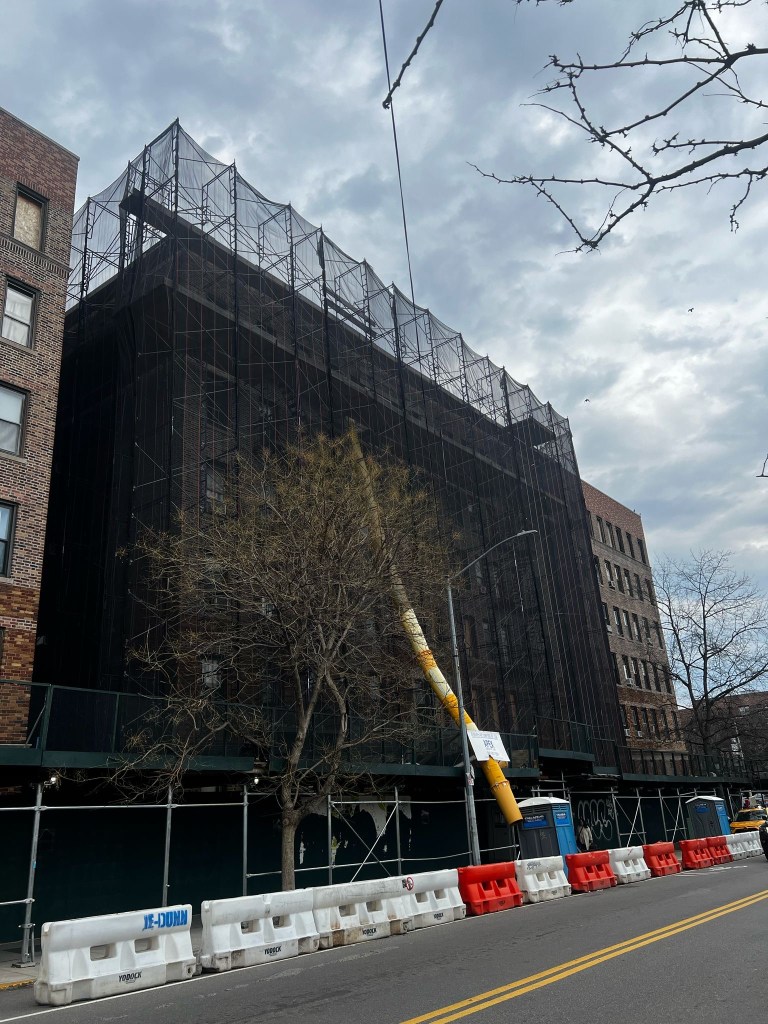Last Sunday night, the musical smorgasbord Globalfest packed Webster Hall in the East Village featuring three stages with many musicians performing from 7 pm to well past midnight.
Over the last decade, Globalfest organizers have been expanding the audience for world music, a musical category that encompasses different styles of music from around the globe.
World music includes genres of non-Western music and folk, ethnic, traditional, indigenous, neo-traditional and music where more than one cultural tradition such as ethnic and popular Western intermingle. World music such as reggae and blues cross over into popular music genres.
At Webster Hall this year, music lovers definitely traveled the globe with musicians from Mexico (Astrid Hadad), Russia (Debauche), Ethiopia (Fendika), Paris (Ginkgoa), Ukraine (Mairana Sadovska), and Lagos (Somi) among the 12 performing groups.
The 10-member Lakou Mizik from Haiti propelled its textured rhythms and melodies during its New York debut to an enthusiastic audience. This new musical collective which came together after the earthquake blends troubadou, vodou, rara, and compas with urban sensibilities including hip-hop.
The styles the band draws from are familiar and yet fresh with an energy that ignited the hall. “The accordion gave it a strong troubadou feeling,” said Haitian music enthusiast Cynthia Karaha. Some of the songs in their repetoire drew from Haiti’s folk traditions including “Panana Ma’m Tonbe” where they added some rap.
Multi-generational, the group is led by guitarist Steeve Valcourt (son of beloved Haitian balladeer Boulo Valcourt) with other instrumentalists often leading in vocals and one female vocalist, Nadine.
Come spring, Lakou Mizik looks forward to its first CD release — “Se Ayiti Wi Carnival 2016,” which was recorded at Artists Institute, a post-earthquake audio academy and facility in Jacmel.
Another energetic performing group Tribu Baharu from the Columbia coast delighted a packed Globalfest hall for a Afro-Champeta party. The music with strong African strains and highly athletically dancing vocalists rocked the house.

Globalfest’s annual musical extravaganza is an expansive addition to an annual conference in New York of presenters (buyers) and performers, APAP–– the Association of Performing Arts Presenters.
January is when world-class artists of all disciplines and genres, including world music, classical, jazz, and other performing artists — dancers and theatre groups converge along with programmers of clubs, museums, universities and other major auditoriums, and independent bookers and producers.
Citywide this year, there were more than 1,500 performances at the public festivals and industry gatherings.
Over the years, Cynthia Karaha notes how globalFest’s presence has raised the visibility, interest and booking possibilities for world music.
Additionally, there was a free two-day world music pre-conference before APAP’s tsunami of showcases, performances and events during the Martin Luther King weekend.
Prior to the actual start of APAP, the conference called “Wavelengths” brought together the largest gathering of world music professionals in the U.S. The free panels covered subjects such as dance and touring opportunities, festivals, programming for youth and families. Making and managing money, intellectual property, and making career decision were other scheduled topics.
The fully-registered session entitled “Our Global Community: What is the Role of the Arts Presenter in a Community in Crisis?” explored how arts organizations can play a leading role in preventing or dealing with cycles of violence in order to achieve and sustain greater community cohesion.
While the weather is cold in January, New York definitely was hot and happening all over town this year and APAP lived up to its motto: “January in NYC is the Place to Be for Performing Arts.”


























